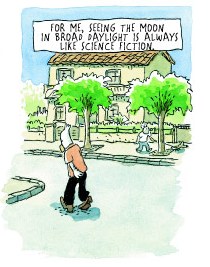What’s on deck with this week’s ComicList? Not The Lapis Lazuli Crown, as I misread, which actually comes out May 20, but CMX does offer the 14th volume of Kiyoko Ariyoshi’s classic ballet shôjo, Swan.
Brigid Alverson offered a preview review of the first volume of Sakae Esuno’s Future Diary (Tokyopop), and it sounds intriguing:
“Despite one cringe-inducing scene of violence toward the end, this is great escape reading, with plenty of action and an interestingly twisted premise.”
Fantagraphics offers a big hardcover collection starring one of my favorite characters from Gilbert Hernandez’s Palomar stories, Luba. Here’s a bit of the solicitation:
“These ‘America’ stories — over 100 of them, ranging from quick one-page blackout sketches to bona fide graphic novellas — were originally published in a number of different comics and reprinted in a trilogy of oversized paperbacks. Luba finally collects in one compact, affordable hardcover the entirety of these tales, showcasing Gilbert Hernandez’s wicked wit, great compassion, and uncanny understanding of how human beings love, squabble, and ultimately find a way to make it through this life.”

